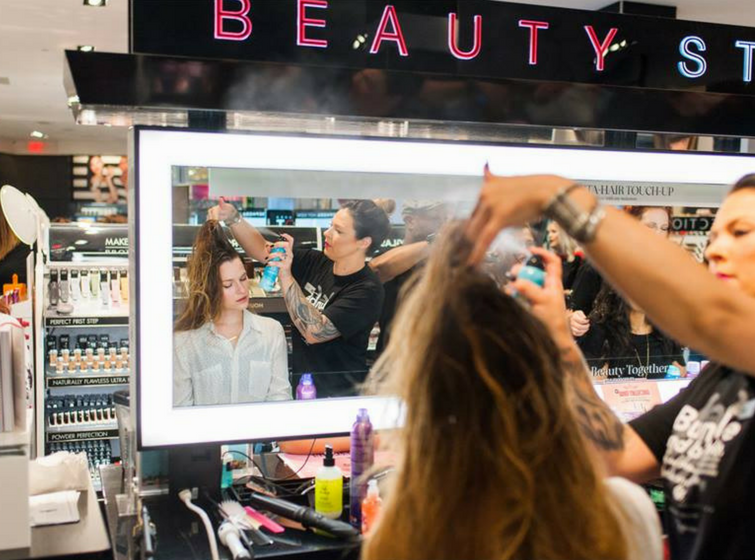Is retail dying?
I have attended a number of retailer conferences this year; looking for where the opportunity lies, what success look likes and learning from others.
As US online purchasers hit 14% of all retail transactions (and it is expected to go to 20% by 2025), there is a lot of conversation about where growth will come from for bricks and mortar retailers.
Whilst figures out this week suggest that 23 retailers per week are closing stores. The number that is not being discussed is the number of new stores being opened. Retailers that have cracked the code of making it easy for customers to visit, integrating the online store creating an omnichannel offering) as well as focussing on the inshore experience, are winning and are growing.
Listening to the CEO of J.C. Penney, Marvin Ellison, in the US recently… he stated loud and proud that brand is created by those people who welcome and serve customers. The concession model has not served the brand for department stores because of the inconsistent in-store experience — that model may have worked last decade but customer expectation and sentiment has shifted.
Authenticity of leadership
Connecting with your team is paramount because ultimately, culture matters more than anything.
Leaders must give people a reason to come to work and encourage a sense of relatedness with the customer. That is, people who work in the business must relate to the needs of the customers and like them! (How often have you walked into a store and felt that you were being judged by the retail assistant?).
It is important that people are proud of where they work and go to work in a place where their efforts are noticed and appreciated.This might be easier for a smaller business that has some connection with the founder, but for the 100,000 J.C. Penny employees across 900 stores, it takes consistent determination from all managers and leaders to achieve this. And the results speak for themselves.
It’s all about perspective. When Marvin Ellison joined J.C. Penney it was down in the previous 18 months from USD19b to USD11b and negative USD 500mil EBITDA. In his opinion, this downturn was a result of ‘bad’ leadership and inconsistent management (not disruption). Ellison said it is easy to ‘blame’ e-commerce or Amazon, but the fact is that people are still spending. His job was to win people back and do thing differently — he saw this situation as a massive opportunity.
Some of the things he set in place:
Monetise the asset — foot traffic and physical stores are in fact a media.
Team members had no commercial acumen and people needed to learn about fiscal responsibility. To tackle this he had them understand the fundamentals of commercial reality using storytelling, analogies and speaking in layman’s terms.
He asked his leaders (then managers and team members) the following questions — only 30% got anywhere near answering them.
Marvin Ellison’s 5 questions
- Describe a core customer (nobody is good enough to serve everyone)?
- What is the mission statement of the company?
- Who are the top 3 competitors in order of importance?
- What are the top metrics and what reports do you look at to determine our achievement?
- What is the purpose of the company?
This is an ongoing pop quiz… perhaps you could ask the same questions of your team?
A really important question was ‘what do people rely on us for? And what relationship do they want to have with us?’ Answering that question helped Ellison’s team determine which stores no longer fit their model, positioning or brand and as a result, they closed 138 stores last year. Even though they had positive cash flow, they did not fit the company brand. This year, J.C. Penney has closed 8 stores — a strong and bold action driven by strategy.
Ellison asked some more questions:
- Could the store cope with a capital injection for upgrade and get a return on it, and over what time frame?
- Would you want your kids to work there or your wife to shop there? If not, then they did not belong inside the purpose statement.
When considering ‘what makes us successful’, this inquiry came from understanding customer behaviour. For instance, a hair salon customer will spend twice as much as a non salon customer because they spent longer in store and went there more often. Therefore, they looked at other ways to bring people in store more often — cross-selling, Sephora concessions, the hair salon, and Women’s apparel — they asked the question what can we group together…
There is no statement truer than: ‘it is far cheaper to keep a customer than to find a new one’. Customers are more intelligent and discerning than they ever have been because of transparency, pricing and google — and this puts pressure on retailers to run a better business. Customers, whilst still in store, can price compare.
An American consumer (Australians are similar) are looking for value that is well presented and easy to access.
J.C. Penney’s mission statement is: Give the customer what they want for less time, money and effort and it became the anthem and the mantra of every employee. Their leaders needed to empower the warrior spirit within the team and play to win.
Last piece of advice
Give the customer a reason to keep on coming, change and sell out, give them something new every time they come — this advice is relevant for online stores too.
Retail is not dying — we are working in the most dynamic time in retail ever! Let’s embrace it.
Also published on Medium.




Leave a comment*All fields are required